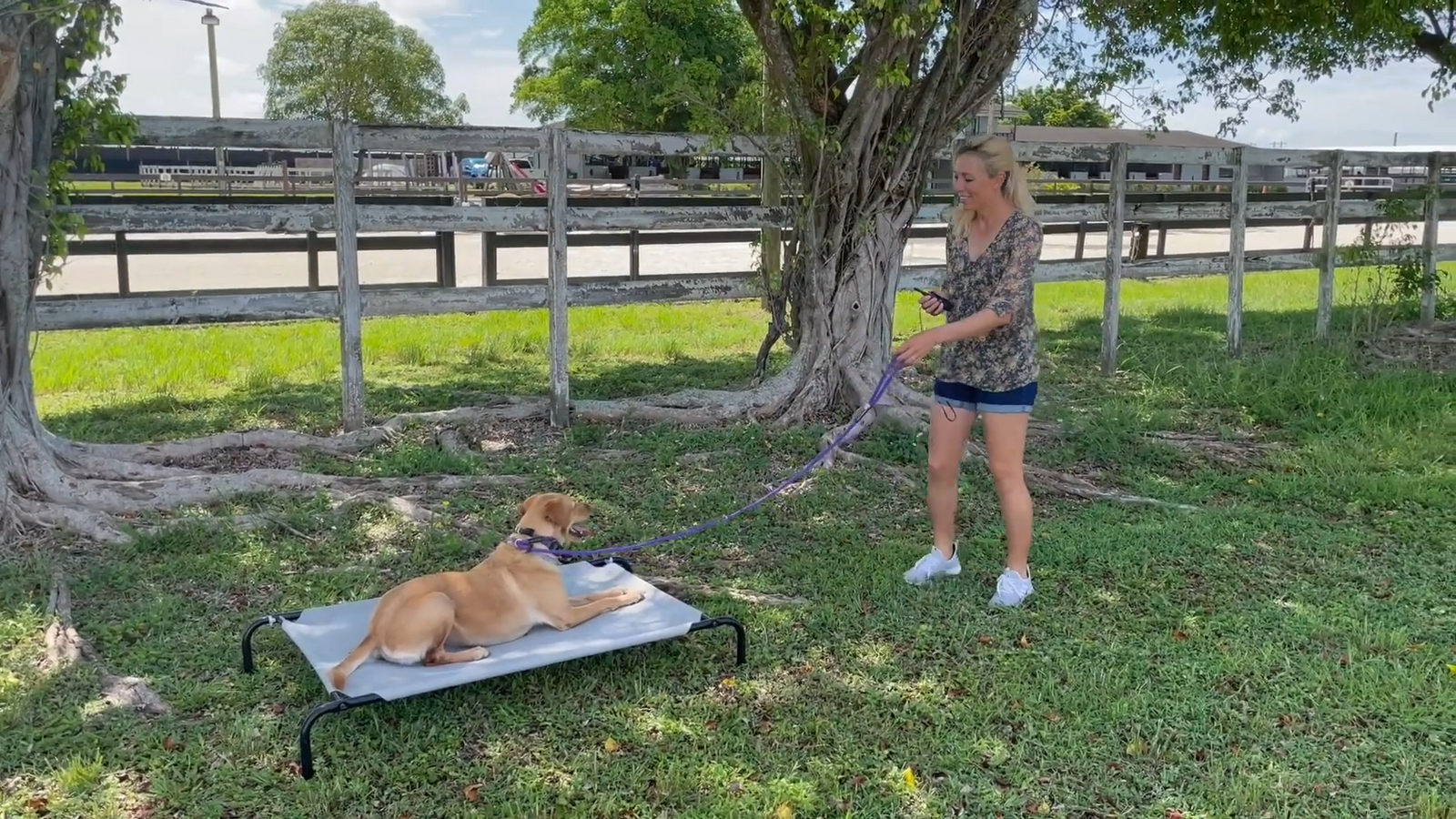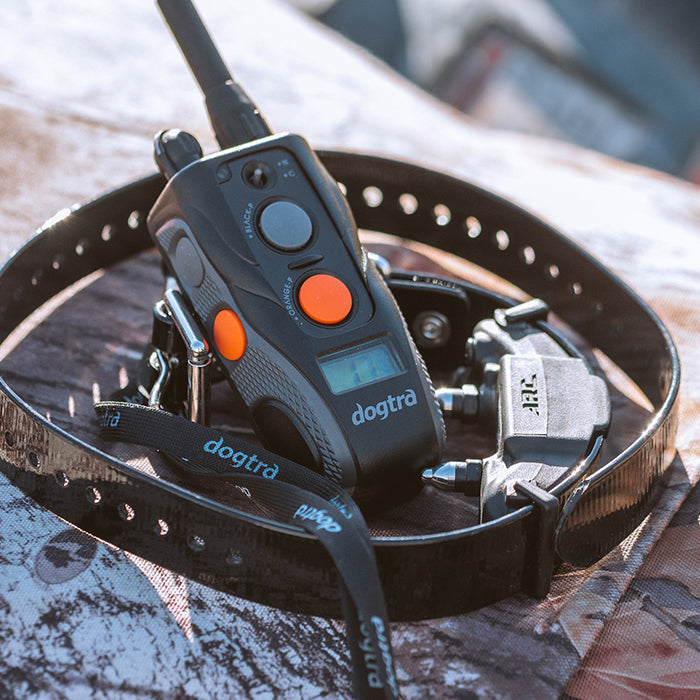6 STEPS TO EFFECTIVE E-COLLAR PLACE TRAINING FOR YOUR DOG

If you're new to e-collar training, it can be a bit intimidating to know where to start. However, teaching your dog the "Place" command is a great place to begin. This simple command teaches your dog to stay on a designated spot, such as a bed or mat until released. It's a valuable skill for a variety of situations, from settling down at home to staying calm in public places. In this article, we'll walk you through step-by-step instructions on how to teach the "Place" command using an e-collar, including tips for properly fitting and using the collar, how to introduce the command, and how to build up your dog's understanding of the behavior. By the end of this article, you'll have a solid foundation for incorporating the "Place" command into your dog's training routine. So grab your e-collar, and let's get started!
How to Start E-Collar Training
3 concepts stand between you and conquering the remote training collar! Let’s master these concepts 1 at a time!

- Come to me
- Go away from me
- Go stationary
Notice here that I am saying the word concept and not naming a certain behavior. This is because the behavior you choose is not nearly as important as your dog knowing the concept of the behavior. Whether you say “come” or “let’s go,” the recall concept is the same, the word is not important and each dog’s criteria for the named behavior differs greatly! But the general idea remains the same. In a previous blog and video, we detailed the “come to me” behavior. Now let’s take a closer look at the idea of sending your dog away from you.
WHY TEACHING PLACE COMMAND IS IMPORTANT
There are countless reasons to get your dog skilled in the art of moving away from you. Here are just a few to consider:
KEEP YOUR DOG SAFE
Teaching your dog the "Place" command is an effective way to keep them out of harm's way. By training your dog to stay in a specific spot, you can prevent them from wandering into dangerous areas, such as the street or other hazards.
CREATE SPACE
The "Place" command is also helpful when you need to create space in a crowded room or hallway. By training your dog to stay in a designated spot, you can free up space for yourself and others to move around more easily.
CONTROL EXCITEMENT
Dogs can get very excited when guests come to visit, which can be overwhelming for both the dog and the guests. The "Place" command can help you control your dog's excitement by giving them a specific spot to stay in while guests enter your home.
PREVENT JUMPING
Many dogs jump on guests as a way to greet them, which can be uncomfortable or even dangerous for some people. By teaching your dog the "Place" command, you can prevent jumping by having them stay in their designated spot while guests enter your home.
IMPROVE TRAINING
Teaching your dog the "Place" command can also improve their overall training. Once your dog has mastered the "Place" command, you can use it as a foundation for other training exercises, such as stay and come. It's a great way to build your dog's obedience and focus over time.
HOW TO TEACH PLACE TO A DOG
Place can be any surface that your dog is instructed to go to and stay there until released. When you are first training the “place” command, it is best to use a raised bed or platform to make the distinction of place easier for your dog. Train the place behavior and make sure your dog is able to complete the behavior without your assistance before adding on the e-collar stimulation. To train “place,” here are 6 steps to get you started:
- Put your dog on a leash and bring your dog within a foot of the place board. Use food to lure your dog onto the board.
- Once your dog has all 4 feet on the board, mark and reward!
- Release your dog from the board and repeat!
- Once your dog is readily hopping onto the board, you are ready to name the behavior.
- We are going to call this behavior “place.” Say the word “place,” wait 2 seconds, then lure your dog onto the board. You are intentionally putting a pause between your cue “place” and luring your dog on the board so that your dog starts to learn the word.
- Gradually fade your lure onto the board until your dog is getting onto place with only the word!
Make sure you are marking the moment when your dog has all 4 paws on the board!
As your dog begins to comprehend the behavior more, you can start to add duration by having your dog go onto place and delaying your reward and release. Going stationary is another concept that we will dive into in our next blog
When your dog is successfully going to place from right next to the board, you can take 1 step further away and send your dog to place from the increased distance. It is important to go slow and not increase your distance too quickly! With time and patience, you should be able to send your dog away from you to their place board from all around the house.
HOW TO TEACH DOG PLACE WITH E-COLLAR TRAINING
Before you start e-collar training, make sure to properly condition your dog’s remote collar. After you have successfully mastered that, you can start with your training session. Layering over your e-collar to the “place” command is done just like we did with the come command. Check out our article about recall training if you have not found your dog's working level yet.
Put your e-collar and leash on your dog and go back to asking for “place” from right next to the place board. With your e-collar set to your dog’s work level, say your command, wait 2 seconds, and if your dog has not completed the behavior, press the continuous button or tap the nick button. Once your dog has completed the behavior, release the stimulation and reward your dog. Do not increase the distance until your dog is demonstrating that they are able to understand the “place” command when stimulation is applied.
CONCLUSION
In my professional opinion, this concept can be the hardest to teach to your dog. We, as owners, spend countless hours teaching our dog to stay close, so the concept of moving away from us is foreign to most dogs. Take your time to lay the groundwork and foundation before advancing. Going slow will pay off big in the end! Stay tuned for the next blog, which will round out the trifecta of the 3 most important concepts to teach your dog on the remote training collar! For more tips and advice on training, check out www.dogtra.com.




